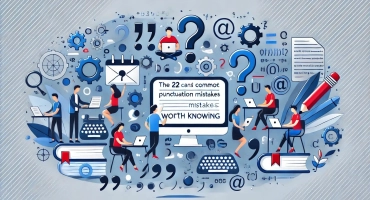‘Which’ or ‘That’: Understanding Relative Pronouns
Table of contents
There are quite a few people who use which and that interchangeably, and it is easy to see how one might make such a mistake. This is particularly true for college students, who are required to write academic essays and papers in English. Well, regardless of how you feel about it, though, there are specific grammar rules for these words.
So if you are having trouble figuring out how and when to use that versus which, this article will show you everything that you need to know. Here, you will discover what each of these words means and understand when it is appropriate to use them.
Main Rule of Using Words That and Which

Before getting into the thick of the “that vs. which” argument, you will first need to gain a bit more understanding of clauses. Once you have grasped that concept, you can then move on to learning how each of these terms operates within a sentence.
- “That”: Used in restrictive clauses, a part of a sentence necessary for the meaning of the sentence. The clause that follows “that” is essential to the noun it’s describing – it restricts the noun to a particular subset.
- “Which”: Used in non-restrictive or descriptive clauses, which provide additional, non-essential information about a noun. These clauses can be removed without changing the fundamental meaning of the sentence.
When it comes to grammar, there are several nuances that we must consider when writing. One of these is the difference between that and which. Understanding the difference between the use of these two words can be tricky, which is why it may be helpful to seek assistance from an academic writing service. That can ensure that your writing is correct and help you avoid any errors.
Examples of How to Use Which in Writing
Now that you are aware of the difference between that and which, here are some examples of how to use which in college writing:
The living room was just beyond the hallway, which was also adorned with expensive trinkets.
Speaking of which, where had Sarah gone?
Vehicles, which are usually pricey when purchased new, can make it easier for you to move around
Now, let’s consider some examples of how that is used in sentences so that you get a better understanding of the differences:
Cats that swim are better adapted to all environments
Mary gave Sarah notes for topics that would appear on the test.
The judges gave high marks to all the gymnasts that displayed originality.
Main Tips to Remember When to Use That and Which
If all of this information is confusing you, let’s make this concept a little simpler by providing you with a few tips and tricks to remember these rules:
- Determine if the Clause is Essential: Ask yourself if the clause you’re writing is necessary to the meaning of the sentence. If removing it makes the sentence unclear, use “that.” If the sentence still makes sense without it, use “which.”
- Comma Usage: Non-restrictive clauses that use “which” are often separated from the rest of the sentence by commas. Restrictive clauses with “that” do not use commas.
- Mnemonic Device: Remember “that” is “tight” to the noun it describes (no commas), whereas “which” is “wider,” providing additional information (often with commas).
- Avoiding Ambiguity: If using “which” could lead to ambiguity about which noun you’re referring to, it’s better to use “that” for clarity.
- Formal Writing Rules: In formal writing, the distinction between “which” and “that” is usually strictly observed. However, in everyday speech, these rules are often more relaxed.
Examples:
The couch, which has a torn cushion, was in the garage.
The couch that has a torn cushion was in the garage.
In the first sentence, the emphasis is on the couch being in the garage. The torn cushion is simply a descriptor. In the second sentence, though, the importance is placed on the torn cushion. This shows the reader that there may be more than one cushion in the garage.
Based on this, you can use which or that, depending on what part of the sentence you want your readers to pay attention to.
- Understanding the Context: It’s important to consider the context in which you are writing. In technical, legal, or formal writing, the correct use of “that” and “which” is crucial for precise communication. In informal contexts, such as casual conversation or informal writing, the rules can be more flexible, and the usage of “that” and “which” often overlaps.
Even with this guide to help you, there is no denying that this is a rather difficult concept to master. To reduce the number of mistakes that you make while writing an essay, consider using an online writing and editing service. Here, you will be able to choose a writer and write my term paper from them. This will provide you with insight into how to structure your essays better.
Remember, it is much better to get academic assistance early on, especially when writing papers or essays. You will then be able to correct any errors prior to handing your work in. Thus, you are able to gain better marks from this edited work.







